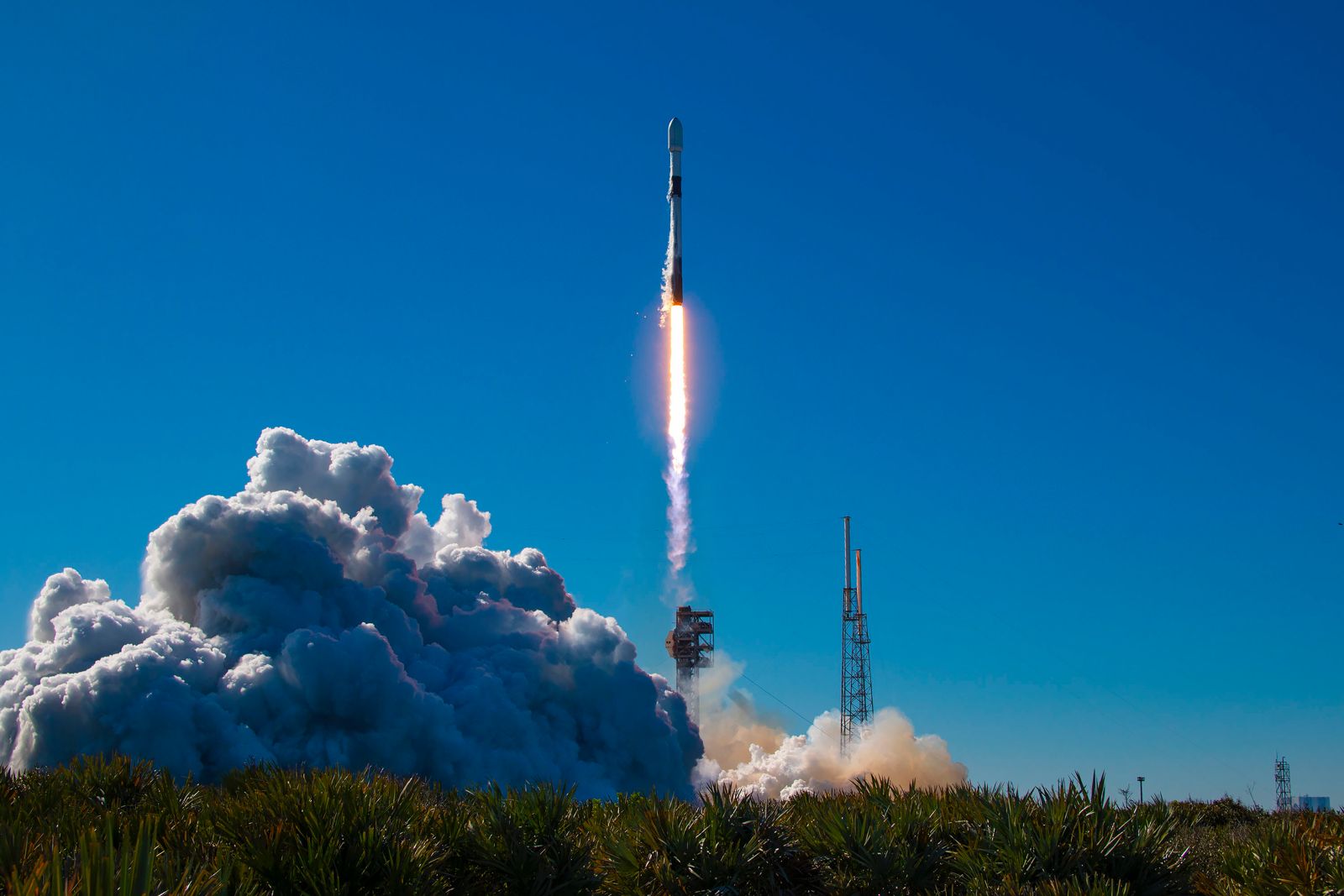Merah Putih 2 Satellite Successfully Passes Critical Post-Launch Phase

The LEOP operation is run by Thales Alenia Space (TAS), which is also the main contractor for the construction of the Merah Putih 2 satellite and plays a vital role in monitoring and controlling the satellite during this phase. During the LEOP phase, TAS uses three (3) satellite control stations owned by Telespazio located in Mountainside (USA), Fucino (Italy), and Kumsan (South Korea). The initial success of the LEOP phase was marked by the reception of Merah Putih 2 satellite telemetry data at the Kumsan control station, indicating the beginning of satellite communication with Earth.
Once communication with the Merah Putih 2 satellite is established, the Earth control station can send a script containing a sequence of commands to the satellite. The first command sent instructs the satellite to open one of the three solar panels (solar arrays) on each side, namely on the North wing and the South wing, followed by the process of charging the satellite's battery from sunlight collected by the opened solar panels. This step is crucial to ensure a continuous energy supply to the satellite during the LEOP phase. At this point, the satellite is still at an altitude of about 300 KM from Earth's surface, as this is where the separation of the Merah Putih 2 satellite from the last part of its launcher (Falcon 9) occurs.
As a reminder, the Merah Putih 2 satellite is designed to be placed in Geostationary Orbit (GEO), which is an orbit at an altitude of about 35,800 KM above Earth's surface. Therefore, the satellite still needs to travel to reach the desired altitude. The journey or process to reach the targeted orbit altitude is called Orbit Rising. During the Orbit Rising process, the Merah Putih 2 satellite uses a rocket that is part of the satellite, functioning to reach the desired orbit altitude. This rocket is called the Apogee Boost Motor (ABM). The satellite activates this rocket gradually when it is at the apogee (the farthest point from Earth's surface) and perigee (the closest point to Earth's surface), according to the satellite's position relative to Earth's surface, until it reaches the desired altitude of about 35,800 KM from Earth's surface and above the equator. The process of activating the ABM rocket at the apogee is called Apogee Motor Firing (AMF), and the process at the perigee is called Perigee Motor Firing (PMF). On February 27, 2024, the Merah Putih 2 satellite reached the expected orbit altitude, marking the successful completion of the Orbit Rising phase.
After reaching Geostationary Orbit, on February 28, 2024, the Merah Putih 2 satellite opened all solar panels on both wing sides, namely the entire South wing solar arrays and the entire North wing solar arrays. After the solar panels were fully opened, the satellite antenna parts (antenna reflectors) for the West side antennas and the East side antennas were opened. There are 2 antennas on the West side and 2 on the East side.
Once both solar panel wings and all four antennas of the Merah Putih 2 satellite were fully deployed, on February 29, 2024, a satellite maneuver was performed by activating the satellite rocket part that functions to shift the satellite towards its targeted orbit slot at 113 East Longitude. This first maneuver is called Drift Positioning Mode-1 (DPM-1). Unlike the Orbit Rising phase, which uses the ABM rocket with high thrust, the DPM maneuver uses a satellite rocket with much smaller thrust to adjust the satellite's position relative to the orbit slot.
On March 1, 2024, as the Merah Putih 2 satellite nearly reached its orbit slot at 113 East Longitude, tests were conducted on the satellite's Electrical Power Subsystem (EPS), which supplies energy to the satellite. These tests included the satellite's battery that stores energy from the solar panels (charging process) and supplies energy to the satellite (discharging process), as well as the Power Conditioning Unit (PCU) that converts the current from the solar panels or battery to be ready for use by the satellite's devices. The EPS testing was completed and declared successful. On this date, tests were also conducted on sending Commands from the main control station owned by Telkomsat in Cibinong and from the backup control station owned by Telkomsat in Banjarmasin. These control stations will be in charge of operating the Merah Putih 2 satellite during its operation.
On March 2, 2024, the Drift Positioning Mode (DPM) maneuver was performed two more times, namely DPM-2 and DPM-3, and on this date, the Merah Putih 2 satellite successfully reached its final orbit at 113 East Longitude. This stage marks the successful completion of the LEOP process for the Merah Putih 2 satellite.
Starting from March 3, 2024, for approximately 21 days, the Merah Putih 2 satellite will undergo the In Orbit Test (IOT) phase of testing the satellite communication system. After the IOT phase is completed, it will be followed by the In Orbit Acceptance Review (IOAR). The operational handover of the satellite from TAS to Telkomsat will be conducted after the IOAR is completed, which is estimated to be around the end of March 2024. Once the operational control of the Merah Putih 2 satellite is in the hands of Telkomsat, the satellite will be ready for service (RFS) in providing reliable communication services throughout Indonesia and serve as an enabler for business solutions, especially in underserved and unserved (3T) areas.
#DiscoverNewHorizons
#TelkomsatMelesat